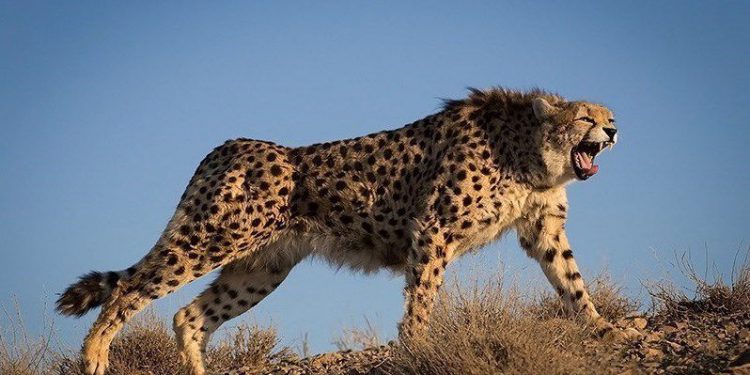Johannesburg: The first batch of 12 cheetahs are expected to reach India from South Africa next month as part of an ambitious project to reintroduce the distinctively spotted cat species in the country where it has become extinct, officials said Friday.
A team of wildlife experts from South Africa returned to their country on Friday from India where they inspected the holding facility where the cheetahs will be released.
Nine cheetahs have been quarantined at the Rooiberg Veterinary Services run by wildlife veterinarian Dr Andy Fraser in Limpopo province, while the other three were quarantined at Phinda game reserve in KwaZulu-Natal province, officials said.
Fraser said he and South African cheetah expert Prof Adrian Tordiffe would accompany the animals expected to reach India next month.
The South African translocation of cheetahs on a still unconfirmed date in October will follow that of eight cheetahs, which are expected to be sent to India from neighbouring Namibia next week.
“There has been a massive collaboration between the nature conservation departments and the veterinarians of South Africa and India. We have had visits from the team that is going to be the custodians of the cheetah on that end, so they are very aware of the process and what is required,” Fraser said.
The veterinarian echoed earlier comments by wildlife expert Vincent van der Merwe, who spearheaded the Cheetah Metapopulation Project, that the cheetah population in India would have to reach about 500 for it to be genetically viable.
“Sending 20 cheetahs, which is what will happen in 2022, is not a viable genetic population. They need to get to a large enough population, which will be a conjunction of initially many South African cheetahs and obviously other cheetahs will breed up from the Indian side as well.
“Cheetahs can breed quite rapidly under good conditions, but in the reserves that they are going to in India, there are very low tiger populations but very high levels of leopard populations. With such interspecies competition you will definitely have some of the cubs that are born in India being killed by competing predators. So, how well they settle there, and how intense or severe the predator pressure is, will determine how quickly they will breed,” he said.
Fraser said South Africa has done translocation of cheetahs to other countries, but it is for the first time that the animals are being sent to India where its population became extinct in the early 1950’s.
“The last confirmed sighting was in 1953, but Prof Jhala from the Wildlife Institute of India seems to be under the impression that there might be anecdotal reports of cheetahs in India until 1970,” he said.
The cheetahs will be fully awake in their transport crates during the flight, but would be tranquilised to keep them calm.
“We immobilise them with a combination of chemicals with a dart gun to anaesthetise them; relocate them into their crates; do the work that we need to do on them; and scan their microchips. Government officials will check if their microchip numbers are correct, because there is disease testing and vaccination protocols required by India that have to match the microchip number of the cheetah itself,” Fraser said.
“They are then loaded into the crates and are administered reversal drugs once their processing is complete. They will be awake before they leave Rooiberg,” he added.
In India, the cheetahs would be released from their crates into a holding facility for the Indian team to monitor their health and to ensure that they are hunting again before releasing them into the reserve which will be their final destination.
PTI






































